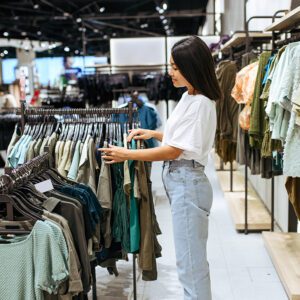Even in an industry accustomed to a rapid pace of change like fashion manufacturing and retailing, AI is racing by like the Road Runner speeding past a desert mesa. That makes things both challenging and exciting for early AI adopters.

Tosha Hays, EVP of Sourcing and Product at Venus Fashion, a trendy women’s apparel brand with a focus on swimwear, began providing AI tools to her team about two years ago, but the learning curve has never really flattened out. “Every day we’re finding different and faster things,” to do with the technology, she said in an interview with Retail TouchPoints. “What we did yesterday [with AI], we might do differently today. I ask my people to spend 30 minutes every day honing their AI skills, because it’s an advantage for them and for the company.”
While such a fast-moving technology might rattle some, Hays is embracing everything AI can do today, including automating mundane tasks, and she’s excited about what it may be able to accomplish in the future.
Retail TouchPoints (RTP): What are some of the ways you’re currently leveraging AI?
Advertisement
Tosha Hays: One of the biggest ways is in product design. Our design team essentially trained themselves — so much of working with AI is hands-on and figuring out prompts, and we’ve been able to “prompt” it into what we need in apparel. For example, we sell a lot of faux leather, and dresses are a big category for us, so AI was able to create hundreds of variations of faux leather dresses. We put [a selection of these] up on our site for pre-orders, and then, based on a formula that takes into account clicks, add-to-carts and purchase attempts, we decide what to actually go into production with. And because we always have [access to] faux leather as a material, when [our customer] votes on a design, we can move it into production quickly. It takes about six months from our “pulling the trigger” to producing the apparel, especially if it’s using denim, faux leather or rayon — we can execute those very quickly.
With [apparel] fabrications that are already known where you might want to use, for example, a print pattern, AI does a beautiful job of scaling those prints [so the design elements are neither too large or too small]. For example, previously with a floral pattern, we’d go back and forth with the scaling, but AI instantly shows you the scale you need. We can take these AI-generated prints, edit them a little bit so that we know that they’re ours, and use them. [Then we can create clothing] that the customer has “voted on” in real life.
RTP: Have you found any drawbacks to using AI for these functions?
Hays: AI can over-generate design details, so you have to pay attention to what can be executed in real life. We’ve been learning more about what categories we can execute at what price point. Also, swimwear is our biggest category for the Venus brand, but you can’t design swimwear using AI because it has limitations on nudity.
We’ve also learned that when you test things, it has to be apples to apples. For example, we had an AI image of a rose gold dress, but when it was produced, the tone of the metallic color [that had been in the image] wasn’t there, and it didn’t sell.
RTP: What are some of the things you’re most interested in applying AI to?
Hays: Actually, it’s more about mundane activities that AI can take over. For example, I had a situation where I had swim separates — styles that only had tops left over in certain prints and others that only had bottoms. For a human to go through and match the styles into [sellable] kits would have taken weeks. But we can “feed” AI the SKU numbers, as well as what the number means in terms of color, size and style, and it will automatically create kits that we can resell to the customer instead of [the separate pieces] going into overstock.
AI also is good for improving the predictability level of inventory management. Certain platforms, like Shopify, have AI integrated [into them], so they can look at sales velocity and what I have in inventory and constantly keep me aware of when, and how much, I should be ordering. The ease of doing that, and removing that human part, creates a whole different level of inventory management.
RTP: Taking a longer view of AI, what do you think will be some of its biggest impacts between now and the end of this decade?
Hays: That’s really hard to answer, because this is such an overwhelming time for the industry, and with how quickly it’s going to accelerate, it’s nearly impossible. Even the difference between when my team started using AI about two years ago to today [has already been] significant. With AI, what we did one way yesterday, we might do differently today.
I do like the idea of having AI agents that could potentially create the “tech packs” that factories use to manufacture a product without my having to think about it. So I could give the AI agent a photo or even an AI-generated image; it would [come up with the tech parameters] and I could just send that to the factory. There already are specialized AI agents that can do some of this work for us.
RTP: You advise companies operating in the luxury space. Do you see brands in this sector trying to be more sustainable with the materials they use or the means of manufacturing them?
Hays: In both my personal and professional opinion, luxury has always been more sustainable than mass market fashion, and certainly fast fashion, in part because the luxury market can procure more expensive materials. I’m an advisor for a company that makes a bio lab-grown leather material that’s exorbitantly more expensive than faux leather. Luxury brands [have price points that allow them to] use these materials, and are able to embrace sustainability in that way.
Even in the mid-tier market — take the example of leggings. If I wanted to use recycled polyester versus “original” polyester, the recycled is more expensive — and the lower you go on the price tier, the more the cents per inch [cost] starts to matter. So for a $15 retail price point, you’ll go for the cheaper material.















